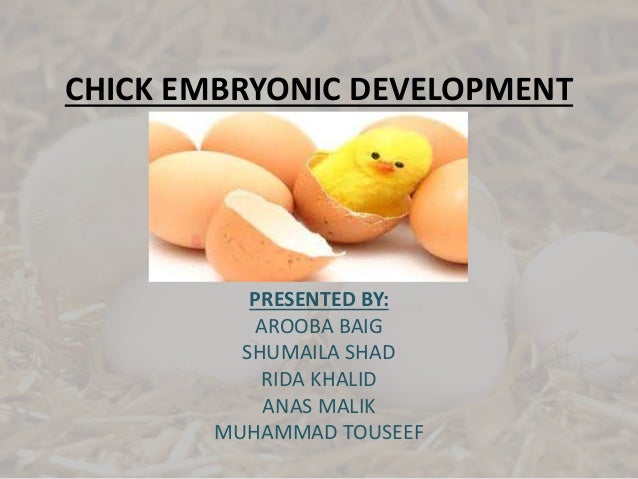96 Hour Chick Embryo Serial Section

Chicken: 33-36 h At about 33 hours after fertilization, the embryo is about 4 mm long and the first flexion of the originally straight embryo starts in the head region. The cranial flexure will.
This membrane is made up of a bladderlike median ventral diverticulum of the hindgut endoderm, covered with splanchnic mesoderm. It connects with the hindgut, which will be found only in sections posterior to the posterior intestinal portal at this stage of development.
Ultimately, this double membrane will fill the exocoel, and its outer layer of mesoderm will fuse with mesoderm of the chorion and the aminion and finally with the splanchnic mesoderm of the yolk sac splanchnopleure. Its function in the chick is related to respiration and excretion. The entire outer covering of the chick embryo is of ectodermal origin and is made up largely of squamous epithelium but will later also include horny scales, feather germs, quills and barbs, claws, beak coverings, and a temporary eggtooth. By evaginations from the surface, the linings of the following structures are also derived from ectoderm: the mouth (stomodeal portion and stomodeal hypophysis); cloaca (proctodeal portion); visceral clefts (peripheral halves); nostrils; eye chamber and lens; otic vesicles; and external auditory meatus.
Illustrations, Index, if any, are included in black and white. Gurevich prakticheskaya grammatika anglijskogo yazika otveti. Fold-outs, if any, are not part of the book. If the original book was published in multiple volumes then this reprint is of only one volume, not the whole set. As this reprint is from very old book, there could be some missing or flawed pages, but we always try to make the book as complete as possible. Each page is checked manually before printing.
The mechanisms of development of posterior levels of neural tubes of chick embryos were analyzed by study of serial cross‐sections of a continuous series of normal embryos between 40 to 72 hours of incubation. Two extirpation experiments were performed in ovo on other embryos of the same stages. Descriptive studies revealed the presence of an overlap zone in which two types of neural tube formation occurred.
Open neural tube formation (by fusion of neural folds) occurred dorsally in this region; closed neural tube formation (by canalization of solid medullary cord tissue) occurred ventrally. Extirpation of the posterior end of the neural plate produced defects within the lumbosacral region, indicating that the posterior neural plate participates in the formation of the lumbosacrum, and that the overlap zone is therefore in the lumbosacral region.

Extirpation of the prospective neural tissue in the anterior end of the tail bud indicated that only the most posterior levels of the neural tube originate exclusively by cavitation of the tail bud. In both extirpation experiments a neural tube formed independently within the tail bud tissue, indicating that formation of the neural tube in this region is not dependent upon direct continuity with neural tissue anteriorly.